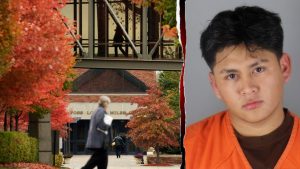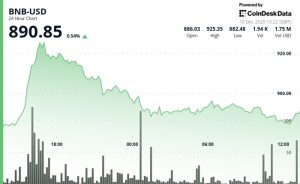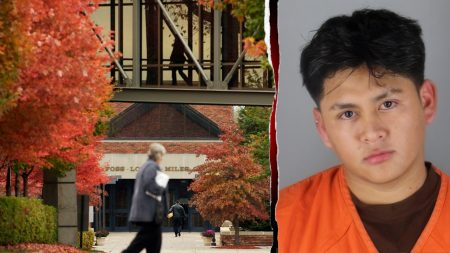North Korea’s Grand Display: A Window into Kim Jong Un’s Growing Power
In a spectacular show of military might and political symbolism, North Korea recently staged an elaborate parade through the streets of Pyongyang to commemorate the 80th anniversary of the Workers’ Party. The event served as far more than a mere celebration of the ruling party’s longevity; it provided leader Kim Jong Un with a carefully choreographed platform to demonstrate his increasingly consolidated power both domestically and on the world stage. As thousands of uniformed participants marched in perfect unison past reviewing stands filled with party elites and foreign dignitaries, observers noted the parade’s dual message: a celebration of Korean socialist ideals and a warning to those who might challenge the regime’s authority. The pageantry, complete with synchronized performances, massive floats depicting industrial and agricultural achievements, and the obligatory displays of military hardware, reinforced the narrative that Kim has carefully cultivated throughout his leadership – that of a nation unified behind its leader despite international isolation and economic hardship.
The anniversary parade revealed subtle yet significant shifts in how Kim Jong Un presents himself to his people and the international community. Unlike his father and grandfather who maintained a degree of mystique and distance, Kim has increasingly adopted a more personable public persona while simultaneously elevating his status within the North Korean political hierarchy. This evolution was evident in every aspect of the celebration, from the massive portraits carried by marchers depicting a confident, smiling Kim alongside everyday citizens, to his prominent position on the reviewing stand where he accepted the adulation of the crowds. Foreign policy experts point out that this careful balance between approachability and authority reflects Kim’s understanding that his power rests not only on fear but also on a manufactured perception of popular support. The parade offered glimpses of this strategy, with carefully selected citizens shown expressing apparently spontaneous emotion at the sight of their leader, while state media emphasized Kim’s connection to the ordinary North Korean experience despite his increasingly lavish lifestyle and absolute control.
Behind the synchronized marching and colorful displays, the parade underscored more serious developments in North Korea’s military capabilities and diplomatic positioning. Strategic analysts noted the prominent display of the country’s expanding missile arsenal, including models believed capable of delivering nuclear warheads to targets throughout the region and potentially to the American mainland. These weapons systems, paraded through Pyongyang’s central square under massive banners proclaiming the country’s nuclear status, represented Kim’s most powerful leverage in international relations and his insurance policy against regime change. The military hardware on display also highlighted North Korea’s growing technical sophistication despite years of sanctions designed to impede precisely these developments. Perhaps most significantly, the parade featured unprecedented prominence given to military officers and weapons scientists, whom Kim personally acknowledged, signaling their elevated status in a society where proximity to the leader determines one’s position in the rigid social hierarchy. This public recognition reinforced Kim’s message that North Korea’s defense capabilities remain his highest priority despite occasional diplomatic overtures.
The Workers’ Party anniversary celebrations took place against a backdrop of economic challenges that have intensified since the COVID-19 pandemic led North Korea to seal its borders even more tightly than usual. Yet the parade’s extravagance seemed designed specifically to counter any perception of weakness or hardship. Elaborate floats depicted agricultural abundance and industrial productivity, while performers enacted scenes of contented citizens benefiting from the party’s guidance. This carefully constructed narrative stands in stark contrast to reports from defectors and international monitoring organizations that describe chronic food shortages, crumbling infrastructure, and an economy increasingly dependent on illicit activities to generate hard currency. The disconnect between the parade’s portrayal of North Korean life and the reality experienced by most citizens highlights Kim’s understanding that perception management remains critical to maintaining control. By presenting images of strength and prosperity, the regime aims to convince its citizens that their sacrifices are necessary contributions to a greater national project rather than the result of failed economic policies and international isolation.
The celebration also revealed Kim’s evolving approach to North Korea’s place in the global order. Unlike previous major state events where international recognition seemed a primary goal, this anniversary parade appeared more focused on domestic audiences and traditional allies. The presence of high-level delegations from China and Russia – North Korea’s most important international relationships – signaled Kim’s pivot toward nations willing to provide economic lifelines and diplomatic cover in international forums. This strategic realignment comes as Kim appears to have abandoned hope for meaningful sanctions relief through engagement with Western powers, instead pursuing deeper integration with fellow authoritarian states. The parade’s messaging reinforced this shift, with prominent displays celebrating cooperation with these partners while portraying Western nations as hostile forces determined to undermine North Korean sovereignty. This narrative serves multiple purposes for the regime, providing both a justification for continued hardship and an external threat against which the population must remain vigilant and united behind their leader.
As the elaborate anniversary celebrations concluded, what remained most striking was how effectively Kim Jong Un has navigated his first decade of leadership, consolidating power through a combination of brutality toward potential rivals and careful image management both domestically and internationally. The parade, with its synchronized displays of loyalty and military might, exemplified the regime’s remarkable resilience despite predictions of its collapse following the transition of power from Kim Jong Il. Looking forward, experts suggest that the pageantry of the Workers’ Party anniversary offers important insights into Kim’s priorities and strategies for maintaining control in the coming years. While economic development remains an official goal, the emphasis on military capability and ideological conformity indicates that Kim continues to prioritize regime security above all else. For ordinary North Koreans, the gap between the celebration’s portrayal of national prosperity and their daily reality will likely continue to widen. Yet as long as Kim maintains the loyalty of key military and party elites while effectively controlling information within his borders, the spectacle of events like this anniversary parade will continue to serve his purposes – projecting strength while masking vulnerability, and celebrating a vision of North Korea that exists primarily in carefully choreographed displays for both domestic and international consumption.










